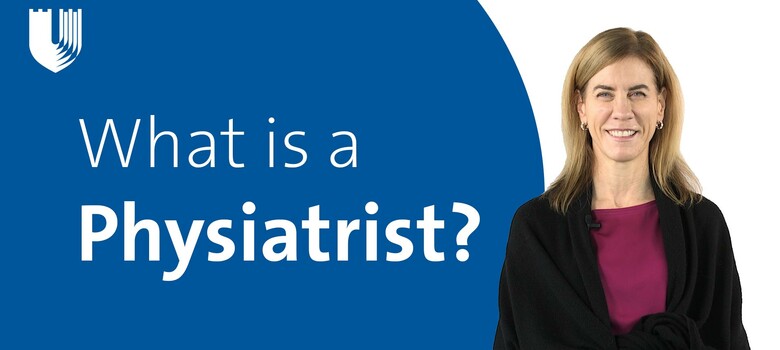Should You See a Chiropractor for Back Pain?

Nearly everyone suffers from back pain at some point. One treatment option is chiropractic care, which often includes spinal manipulation (also called manual manipulation), exercise advice, and self-care recommendations. Research shows that spinal manipulation can help relieve pain and improve function in people with acute low-back pain, one of the most common types of back pain. Duke’s Spine Health program offers chiropractic care and other conservative treatments for back pain as part of its whole-person approach to helping you feel better faster.
Here, Duke chiropractor Eugene Lewis, DC, MPH, answers questions about how chiropractic care could help you feel better.
What kinds of conditions does a chiropractor treat?
I mainly see spine-related conditions. This includes pain in the low back (called the lumbar spine), the upper back (called the thoracic spine), and the neck (cervical spine). Some of my patients have had a recent injury while others have had pain for many years. Common causes of spine pain include disc problems and muscle spasms. Many patients have leg or arm pain or headaches in addition to back and neck pain. Chiropractors often work with injuries in other parts of the body, too -- knee injuries, shoulder injuries, things like that -- but my main focus is on the spine.
When can a chiropractor help with back pain?
People often want to try the kind of conservative approaches that chiropractors provide first. In fact, this is what many clinical care guidelines recommend. So before trying treatments like injections or surgery for back pain, they may want to consider chiropractic care, physical therapy, or acupuncture. Much of the time, back pain resolves with this kind of treatment.
What types of chiropractic treatments do you offer?
I primarily use manual manipulation. That means I use my hands to try to improve movement in your spine. If I can improve joint mobility in a certain area -- the spine, neck, middle back, lower back, pelvis -- it may reduce muscle tightness. It can also help with irritation of nerves that travel down the arm or leg, causing numbness or tingling, pain, or even changes in strength. I sometimes use other therapies as well, such as giving people exercise instructions or self-care recommendations.
What are some other aspects of chiropractic care?
I spend about 20 to 25% of my time talking with and listening to my patients. We talk about flexibility; we talk about strength-building; we talk about balance. I look at your ergonomics: What do you do for work? How do you bend, turn, lift? Do you ride in a car all day? Do you sit in front of a computer? I try to understand what may be contributing to the pain or other symptoms you may be experiencing.
Often, I’m trying to help patients by encouraging them: “Yes, you can do this,” or “When something like this happens, try to do this instead of that.” That way, they’re not anticipating pain and causing more pain and more muscle spasms. Pain scientists have found that anticipation of pain can lead to more episodes, more muscle spasms, more headaches, and so forth. So, teaching patients how to think about pain is important.
Our goals focus largely on returning people to the activities that are important in their lives, whether those are job-related, family or socially oriented, or recreational in nature. Active people are healthier and happier.
What should I expect at my first visit to a chiropractor?
It won’t be a lot different from what you’re used to with other medical providers. I first gather a lot of information about you by asking questions: how your pain began, what is the effect on your pain when you do this or that, what your level of pain is, and any other symptoms you may have. If your information is in My Duke Health (previously Duke MyChart), I’m going to read it beforehand. This includes if you have images -- MRIs, X-rays -- or blood work.
Then I’m going to perform an exam that assesses both the medical and mechanical aspects of your pain. For example, I’ll look at alignment, muscle tone, nerve function, how your body is moving, how well you can bend, turn, twist, and what kind of movements reproduce the symptoms you’re having. If you haven’t had X-rays or other imaging and we need to order it, we can do that. However, most patients do not need imaging at their first visit.
After the exam, we have a discussion: “This is what I think is happening with your spine, these are the treatments I would recommend, and this is how I think it will help you.” Since I’m part of a team, if I think a patient will get additional benefit or more benefit from seeing a physical therapist, physiatrist, spine surgeon, or other provider, I will also suggest that referral.
Do you offer virtual visits?
I offer video appointments for virtual exams, diagnoses, and patient education. I might recommend self-care that you can do at home like heat therapy or stretching, or you may need to make an in-person appointment for hands-on treatments or additional evaluation.
Are there risks or pain associated with spinal manipulation?
Your muscles may be a little sore afterward and some patients feel a little tired. However, most of these symptoms are gone in less than 24 hours. Fortunately, complex side effects associated with manual manipulation are rare.
How often do I need to see a chiropractor?
At first, I might see a patient once or twice a week. If the condition is acute, I might see the patient every day to begin. As they improve, I recommend fewer visits and start giving the patient more things to do on their own at home. I want my patients to be as independent as possible. There are patients who have chronic problems and need to come back and see me occasionally. But the great majority of patients have issues that are resolvable, and I may never need to see them again after their condition has improved.





